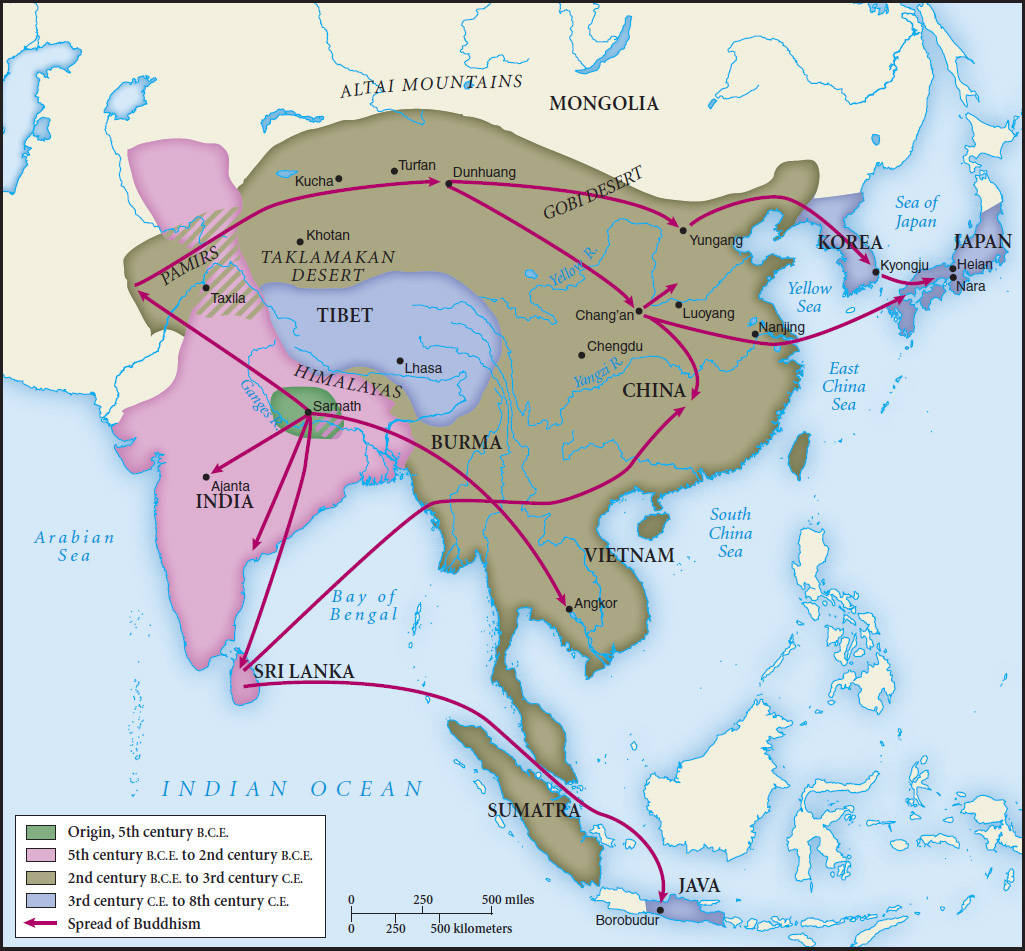China and Buddhism
By far the most important gift that China received from India was neither cotton, nor sugar, nor the knowledge of saltpeter, but a religion, Buddhism. The gradual assimilation of this South Asian religious tradition into Chinese culture illustrates the process of cultural encounter and adaptation and invites comparison with the spread of Christianity into Europe. Until the adoption of Marxism in the twentieth century, Buddhism was the only large-scale cultural borrowing in Chinese history. It also made China into a launching pad for Buddhism’s dispersion to Korea and from there to Japan as well. Thus, as Buddhism faded in the land of its birth, it became solidly rooted in much of East Asia, providing an element of cultural commonality for a vast region (see Map 8.5).
